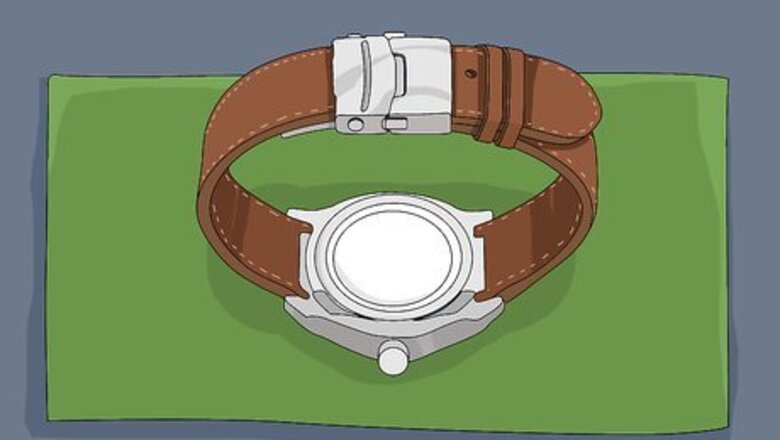
views
Opening the Deployment Clasp

Place your watch flat on a clean surface. The two leather straps should not be buckled together. A table or countertop are good options, but make sure you’ve wiped them first. Dirt will scratch the crystal face of your watch when you flip it over. You could also lay a clean cloth across the surface and place your watch on top of that, for extra cushion and protection from scratching.
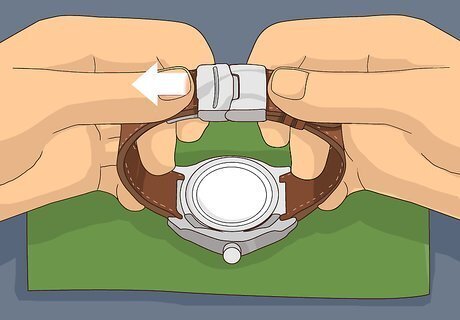
Pull on the metal buckle to begin opening a standard deployment clasp. The deployment clasp is located where the watch buckle attaches to the leather strap. Firmly grasp the leather strap with one hand, then place the finger and thumb of your other hand on opposite sides of the metal buckle. Pull on the buckle, away from the strap. It will snap open, revealing half of the metal deployment clasp.
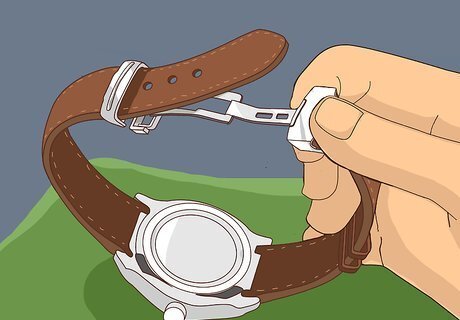
Finish opening the clasp by pulling on the now-open section. Keep one hand on the leather strap. With your other hand, grasp the flat, open piece of the deployment clasp and pull firmly away from the strap. This will open the deployment clasp completely. At this point, the deployment clasp will be completely extended to its longest position. The deployment clasp is made up of three hinged portions. This is known as a “butterfly clasp” because the two side pieces can flap back and forth like the wings of a butterfly.
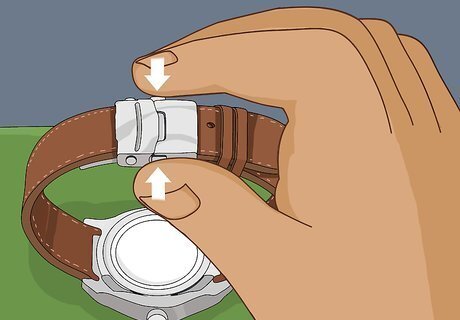
Press the buttons on the buckle to open it, if it’s a push button clasp. Certain watches are outfitted with push button deployment clasps, which are slightly easier to open than standard deployment clasps. Locate two small buttons on either side of the metal watch buckle. Press these buttons simultaneously with your thumb and forefinger, and the deployment clasp will spring fully open. Push button buckles offer additional security and prevent the clasp from opening on its own. Once open, push button clasps and standard deployment clasps are adjusted the same way.
Changing the Length of the Band
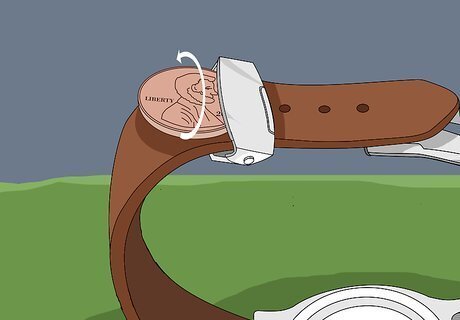
Pry open the metal buckle at the end of the deployment clasp. The clasp is made of two hinged pieces of metal. Insert your thumbs into the space between the two flaps of the buckle and pull them apart. They should click open and reveal a small pin, known as the post. The larger top flap is typically embossed with the brand name of the watch, while the bottom flap is smaller and unmarked. If you are unable to open the flap with your fingers, use a penny or similarly-sized coin. Insert the penny between the branded top and the unmarked flap. Twist the coin to either side. The pressure should force the flap to drop open. New watch buckles are often more difficult to open.
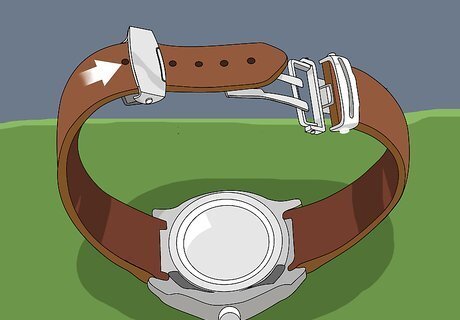
Thread the other leather strap through the now-open buckle. Flip the watch over so the crystal face is pointing down. Slip the end of the strap without the deployment clasp into the buckle, between the two metal flaps. Continue threading it through until the band has reached your desired length. Note that the watch will look larger now than it will once the deployment clasp is closed again. Keep that in mind while adjusting the length of the strap.
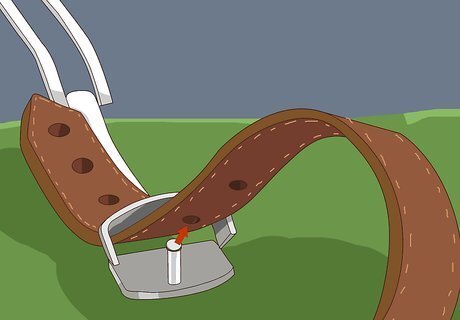
Put the post through the desired hole in the leather strap. The leather strap will feature a row of small holes through the center. Push the metal post through one of the holes, taking a best guess at which one will best fit your wrist if you don’t already know. It will be easy to re-adjust the length of your watch band, so don’t worry about making it too small or too large at this point if you’re not sure exactly which hole to use.
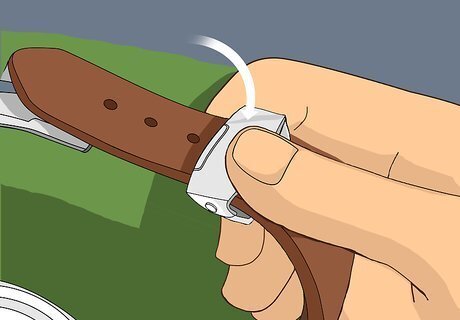
Press the flaps of the buckle together to snap it shut. Close the flap by pressing it back up toward the branded top bar. Fold the clasp thirds back up, pushing the top and bottom in between your fingers until you hear a click. Pull gently on the deployment clasp to make sure the buckle is fully locked in place.
Wearing the Watch
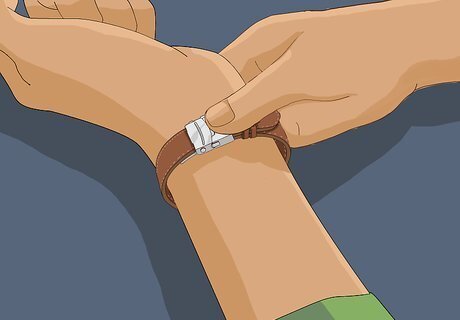
Put on the watch and close the non-buckle side of the clasp. Slip the watch over your hand and onto your wrist. Fold the non-buckle side of the deployment clasp closed and snap it shut with your thumb and forefinger. You’ll hear a small click, which means that it is fully secured.
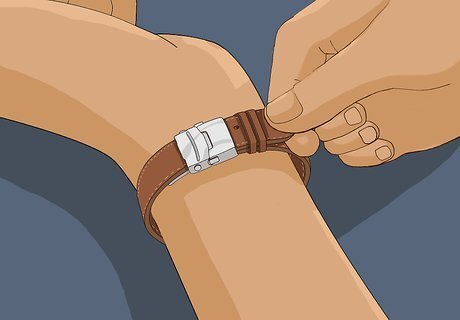
Slip the end of the leather strap through the leather loop and push down. Grab the end of the leather band without the buckle and slide it through the small leather loop on the other band. Push it through until it lays flat against the other band, then push down gently against your wrist with your finger. The second half of the deployment clasp will snap shut. You will hear another small click as the deployment clasp snaps fully shut. At this point, the watch band is secure on your wrist. The band should be tight enough to stay on your wrist without turning or slipping off your hand, but it should not be tight enough to dig into your skin or cut off any circulation.
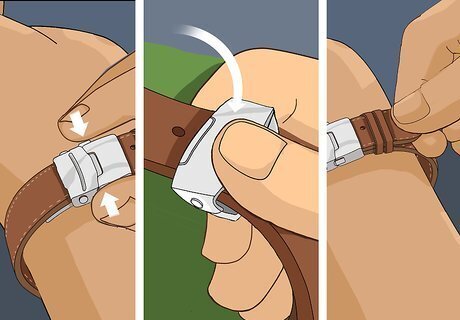
Adjust the watch as needed by re-opening the deployment clasp. If you need to make any adjustments, open the watch by either pulling up on the buckle or pressing the buttons on the buckle, depending on your watch type. Follow the same steps to adjust the length: Remove the watch from your wrist, re-open the buckle, and adjust which hole the post goes through. Then, put the watch back on and close the clasp. Repeat as needed until you achieve the correct fit.
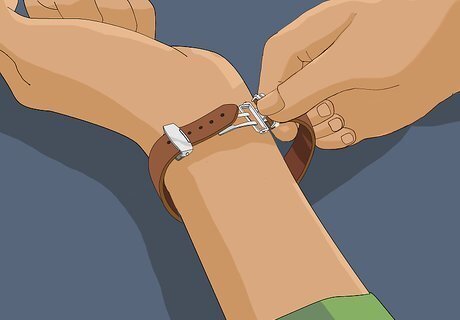
Use the deployment clasp to remove your watch. Once the band has been adjusted to fit your wrist, you will not need to repeat these adjustments. Each time you want to wear the watch, open the deployment clasp and expand the band to its widest position. Slip the band onto your wrist, slide the leather band through the loop, and close the clasp. Deployment clasps are designed to preserve the lifespan of watch bands by reducing wear on the leather straps.


















Comments
0 comment